
Back |
Ecuador:
Building Radio Musical |

Next |
|
|
|
In early 1964, while browsing
the stores and sights in Quito's colonial downtown, I spotted a
store with a radio transmitter in the window. I went in to see
it, and the proprietor, Ing. Al Horvath, saw me peering into the
innards of a 1,000 watt radio transmitter with uncommon interest
and curiosity. |
|
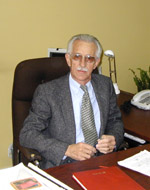
Carlos Guarderas Barba in 2005.
Carlos managed Ing. Horvath's business |
|
Somewhat
amazed about my interest in a transmitter (I
looked every bit of 17... or less), I explained
my several years of "work" in radio. Horvath
confessed that he had built the transmitter
hoping to sell it to someone, bundled with a
license his son in law, Carlos Guarderas had
obtained for a new AM in Quito (where there were
already about 40 other AM's). |
|
Unfortunately, no one wanted that frequency: 570 AM.
In Ecuador, stations did not use towers, preferring instead to
use long-wires hung between tall wooden poles. Of course, a low
frequency would not tune easily in to such a short antenna, and
so this channel was available... for a price of U$S250 dollars
(I had to buy the transmitter I had been admiring, too. And the
tower. And the ATU... there was a catch of kinds.).
|
|
|
| My late father had been an investment banker and managed money
all his life so most of my birthday and Christmas presents were
shares of stock, not Roy Rogers 6-Gun sets. From that beginning,
I had saved and invested since I was in the QSL card business,
and had a little stashed away. I decided that a city of 700,000
with nearly 40 operating stations badly needed one more. |
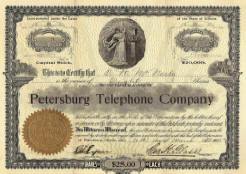 |
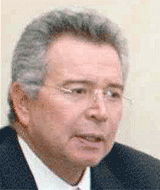
Francisco Aguirre Gómez of ORC |
I bought the transmitter equipment from
Ing. Horvath, and headed to
Mexico to buy jingles from
Organización Radio Centro and Francisco Aguirre Jr. At the same
time, I established contacts with the major Mexican record
labels to receive new releases, since Ecuador produced nearly no
pop music records. Peerless, RCA, Musart, Gamma,
Orfeón, and Columbia all were happy to hear about the first pop
music station in Ecuador.
|
|
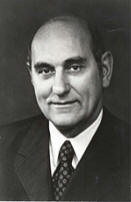 |
Larry Cervon managed Gates Radio Company in Quincy, Illinois. I
purchased all the studio equipment from Gates during a visit to
Quincy in July of 1964. The former Gates factory was on this street in Quincy, with
the Mississippi River at the end. |
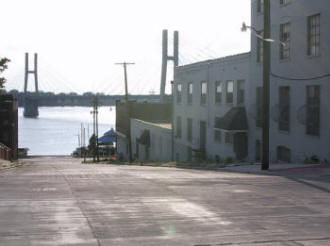 |
|
| In September, 1964, we were
ready to put the tower up. The transmitter site was on a flat
hilltop to the NE of Quito which we happily found had nice
conductivity because it was very loamy and less rocky than other
areas of town. Quito lies along a long sequence of valley areas in the high Andes. |
Here are a series of photos
of the construction of the transmitter site
for Quito's new
HCRM1, Radio Musical, on 570 AM. |
|
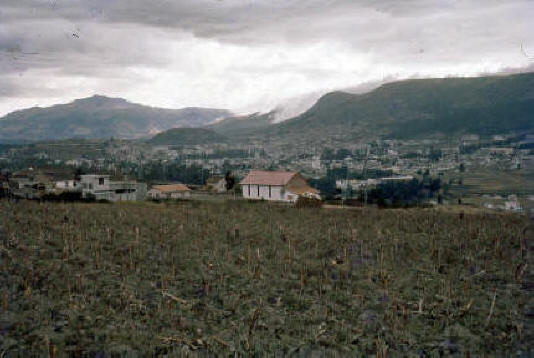 |
| The transmitter
site before any construction in late August of 1964. The city of
Quito lies below the site, which was over 10,000 feet AMSL. The view
is form the Northeast, looking over the central and northern part of
the city. |
|
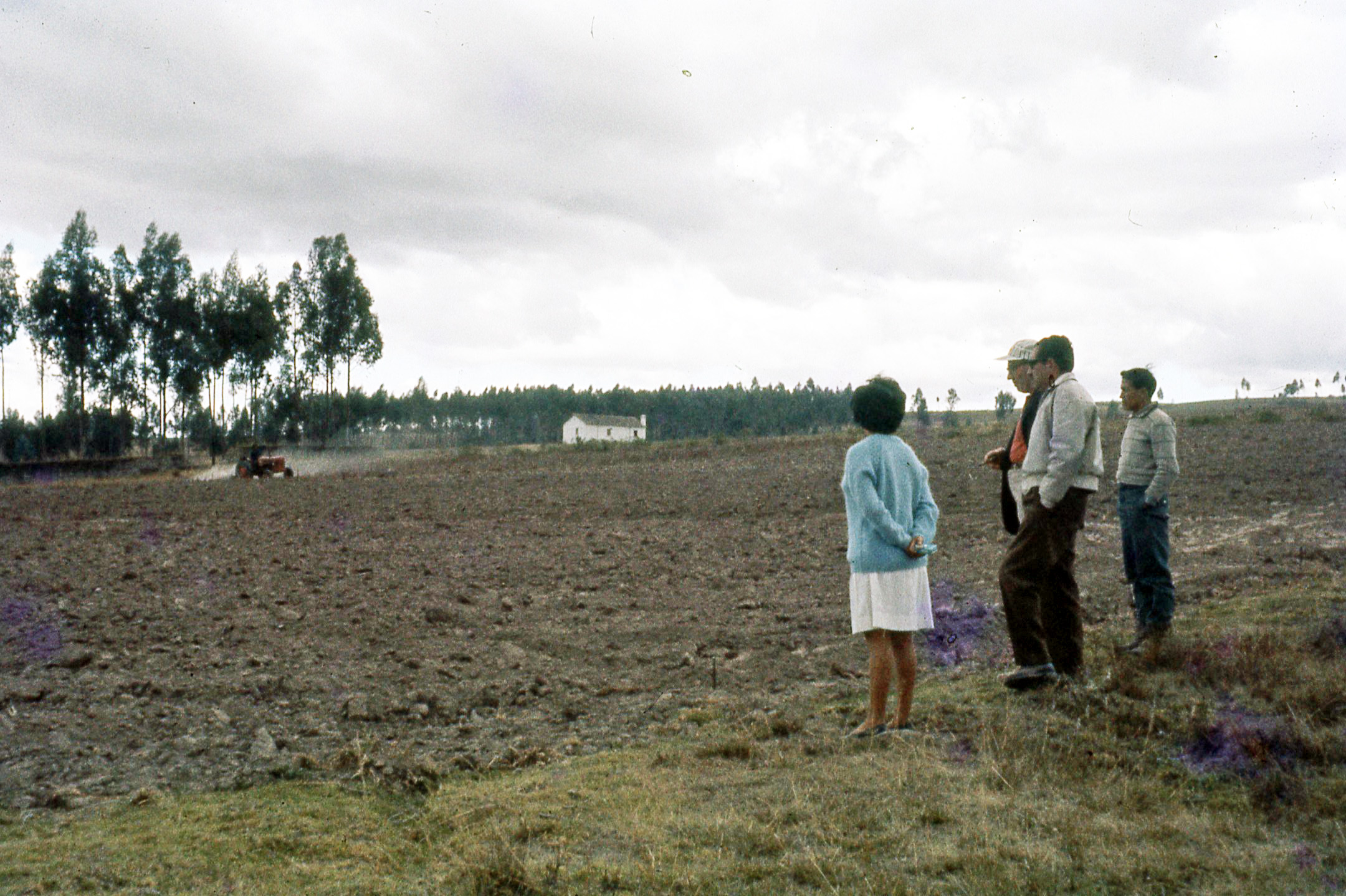 |
|
Plowing the furrows for the 120 ground wires that
will be buried under the earth... 8000 meters of copper wire or
enough to lay a single strand from the site to downtown Quito. |
|
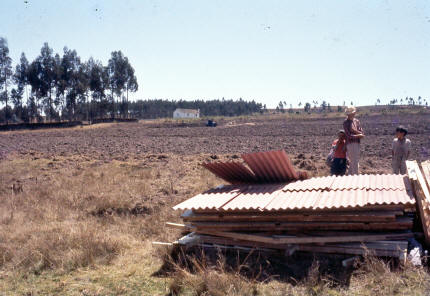 |
The "caseta" or transmitter building was
prefabricated, and sported a very
handsome pure asbestos roof. |
|
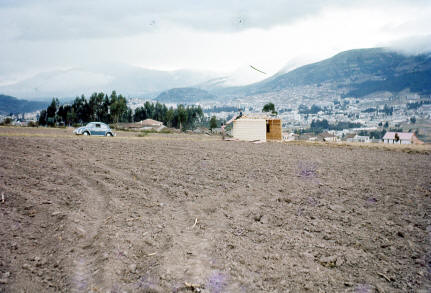
|
|
The land is plowed in preparation for the laying of
8,000 meters of ground wire. |
|
|
 |
Construction begins
with the transmitter building, prefabricated by a local carpenter.
Note the land freshly plowed and turned to make burying of radials
easier. 5 miles of copper was buried for the ground system. At the
time, other stations simply buried an old car radiator as a ground! |
|
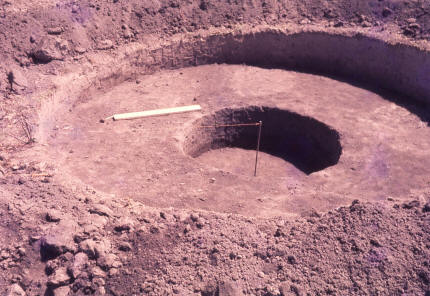 |
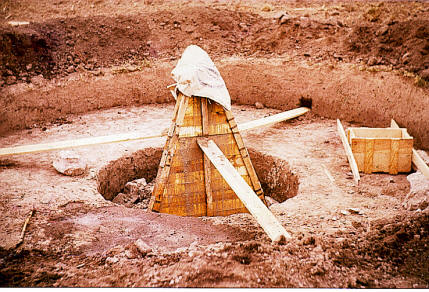 |
A nice hole is ready
for the tower base to be poured and then cement
is poured in it and cures in its wooden form; bolts
to hold the tower base are protected by a cloth
cover.
Below, Ing. Al Horvath looks at the form for the
tower base prior to pouring concrete. |
|
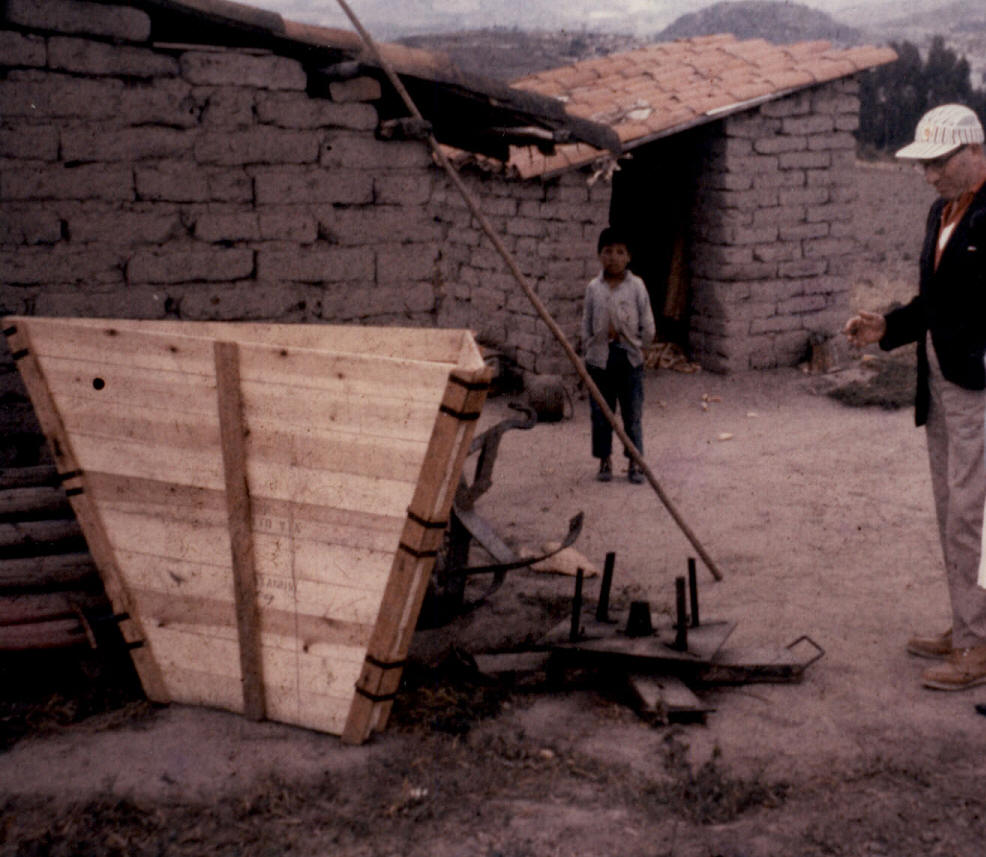 |
 |
|
Ing. Horvath surveys
the base and the frame for the doghouse (antenna
tuning unit)- The interesting scaffolding had a
purpose: the tower was erected top section first
and winched upwards, with new sections being added
to the bottom. A crew of farmers manually held guy
wires and ropes as the tower rose. |
|
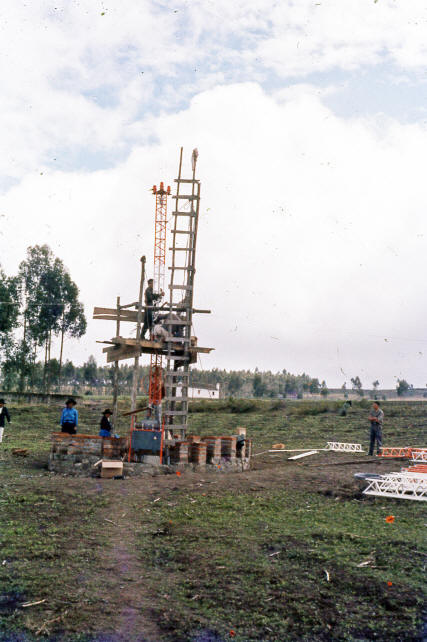 |
|
The first and topmost
section is assembled; other sections lie to the
right.
Note the beacons and lightening rods on the tower. |
|
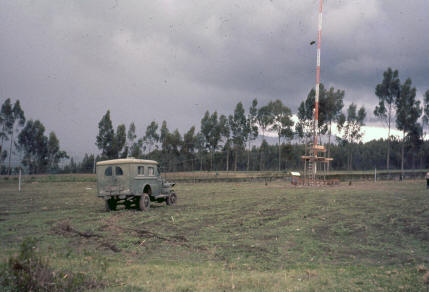 |
| This old truck
carried the winch that pulled the tower upwards
using the wooden scaffold as a gin pole. |
|
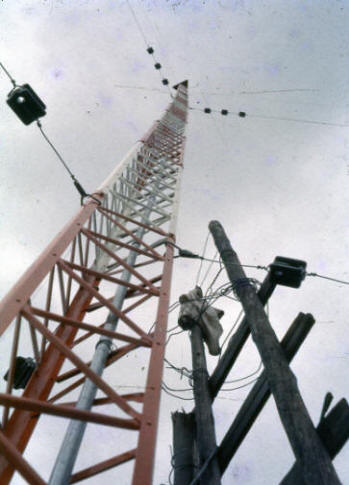 |
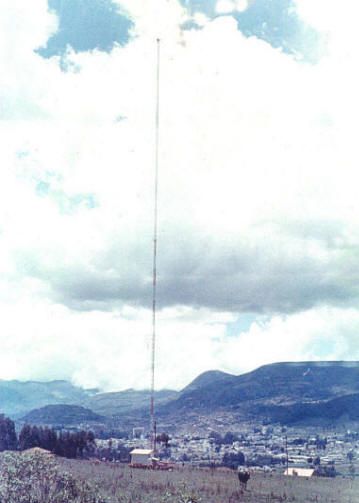 |
|
Seen from the
scaffold, here the tower is part way up, and still
not tensioned properly. There is, in fact, a
pronounced lean at the top. |
"Towering" over Quito
from the suburban area of Bellavista, HCRM1 looked
to have a huge tower. In fact, it was only 100
meters
high, with enormous top-loading to work on 570. |
|
The first cart machines in Ecuador were at Radio
Musical. It also had the first solid state audio
chain (Audimax and Volumax).
Click on the picture for a higher
resolution view of the studio. |
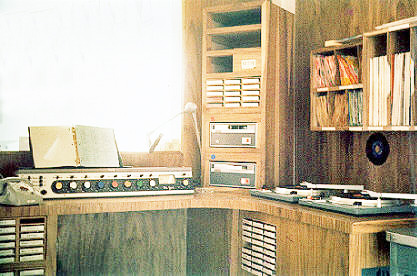 |
|
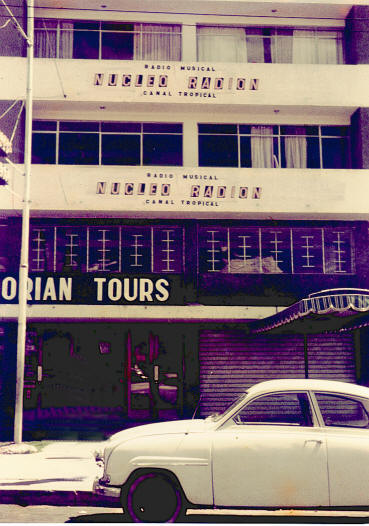 |
The station
was located in this building on Avenida Colón and Ave. Amazonas in the more modern
northern part of Quito for its first 3 years. The signs above
and below the
second floor say, "Núcleo Radión" which was the name
for the growing station cluster after Canal Tropical-805 was
added in 1966.
The ugly SAAB car was mine, being my first
experience in trade deals (three-for-one, anyone?). It got me to
the transmitter and was safer than the Vespa I had
used for the first year on the air. |
| |
|
|